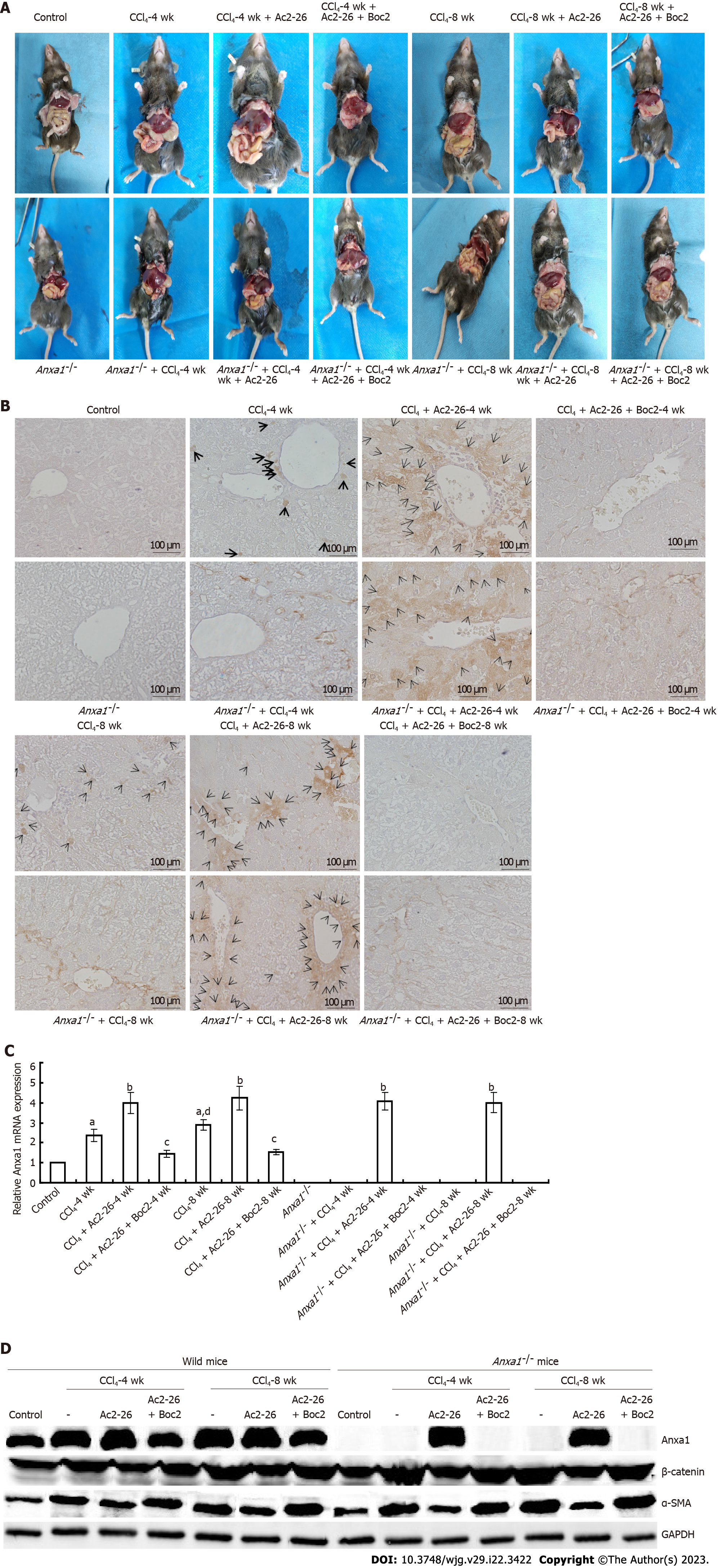Copyright
©The Author(s) 2023.
World J Gastroenterol. Jun 14, 2023; 29(22): 3422-3439
Published online Jun 14, 2023. doi: 10.3748/wjg.v29.i22.3422
Published online Jun 14, 2023. doi: 10.3748/wjg.v29.i22.3422
Figure 1 Annexin A1 inhibited CCl4-induced liver injury.
A: Gross view of liver tissue. The liver of mice in the control group was red with bright color and smooth surface. In the CCl4-induced model group, the liver was light in color, rough and grainy on the surface. Liver tissue nodules appeared at 8 wk, and fibrosis appeared at 8 wk in Anxa1-/- mice. After Ac2-26 treatment, the liver was mostly dark red, and the surface roughness was reduced. The effect of Ac2-26 was reversed by Boc2, and the liver color became lighter, the surface was grainy, the edge was blunt, and the texture was hard; B: Annexin (Anx)A1 was expressed in liver tissue. Anxa1 was stained brown. Compared with the control group, the liver tissue in mice treated with CCl4 showed obvious AnxA1 staining. More liver tissue was stained at 8 wk than at 4 wk. The AnxA1-/- model groups were hardly stained. More tissue staining was observed in the CCl4-induced model group after Ac2-26 treatment, while staining was almost absent after Boc2 intervention; C: AnxA1 mRNA expression; D: Protein expression of AnxA1, α-smooth muscle actin, β-catenin, and GAPDH (n = 8). Results are presented as ratios of target mRNA or protein normalized to internal GAPDH. aP < 0.05 vs control; bP < 0.01 vs CCl4; cP < 0.05 vs CCl4 + Ac2-26; dP < 0.05 vs intra-group. Ac2-26: Active N-terminal peptide of annexin A1; AnxA1: Annexin A1; Boc2: N-formyl peptide receptor antagonist N-Boc-Phe-Leu-Phe-Leu-Phe; α-SMA: α-smooth muscle actin.
- Citation: Fan JH, Luo N, Liu GF, Xu XF, Li SQ, Lv XP. Mechanism of annexin A1/N-formylpeptide receptor regulation of macrophage function to inhibit hepatic stellate cell activation through Wnt/β-catenin pathway. World J Gastroenterol 2023; 29(22): 3422-3439
- URL: https://www.wjgnet.com/1007-9327/full/v29/i22/3422.htm
- DOI: https://dx.doi.org/10.3748/wjg.v29.i22.3422









